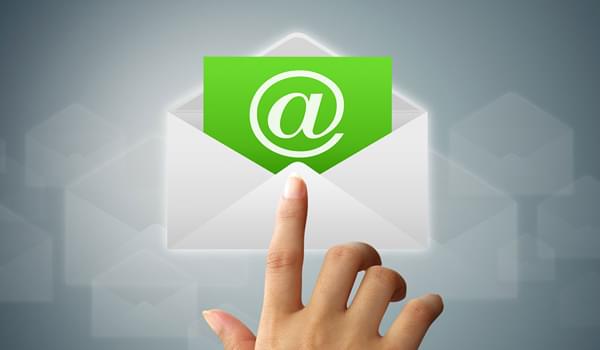Email marketing is still a very important and successful form of marketing and certainly has the potential to increase a business’ revenue if used correctly, the only problem is how to implement or optimize your email marketing campaign successfully in order to get the results you are hoping for.
There are a number of key factors to the optimization process if you want to make the most out of your email marketing; timing, design, portability and deliverability.
Timing
If your email marketing plans aren’t going quite the way you thought they would, it could be a basic problem like bad timing. Trying to market your Christmas trees during the summer holidays is one mistake, and hopefully one that no one is actually making, but sending out your marketing emails over the weekend instead of during the week is another one that not many people even realize effects them. Part of you might be thinking that a weekend is a great time to market things, but recent studies have shown that the weekend could actually be the worst time to do it.
The conversion rate on a Saturday is shown to be around 3%, and Sundays are only slightly higher at around 6%. Compare this with Tuesdays which typically offer around a 28% conversion rate or Fridays which give around 27% conversion, and it’s quite obvious which days are best for your marketing. The same study also showed that the conversion rate increased more than 40% on evenings compared to mornings, so the late afternoon and evening of Tuesdays or Fridays may provide you with a much better marketing result than your previous preferences.
Design
These days, technology has advanced considerably, which means that it is actually very easy to send an email that look just like your website. Fantastic right? No, it isn’t. Surveys have shown that most users hate the website-look in an email. If they wanted that, they would have gone to your website. Simplicity is considerably more important and favorable, white backgrounds and black fonts have always been a favorite and for the easy readability they always will be. However, reflecting a little on your brand can also be beneficial; include your company logo, use a little color or some small images to draw attention to key points. Emails are advanced, and it would be a shame not to use some of that technology to your benefit, the important thing is finding the right balance between simplicity and attractive design.
If you do include images make sure that they have alternative text. A number of people have images disabled within their emails by default until you become a trusted sender or they authorize the display of images, including alternative text helps them to understand the context of the images even without seeing them. This may make them more likely to add you to their trusted senders list.
The most important thing is to remember why your recipient agreed to receive emails from you; whether it was for offers or news. Use this to produce the format of your emails, separate blocks of text to make them easier to scan, provide lists, use number digits instead of spelling out numbers (the human brain takes longer to process a number digit, so they will stop and look at it longer, this is beneficial to you if it is used for a price or statistic). Use hyperlinks instead of inserting URL strings, this makes the whole email look tidier and more organised and make sure you include offline contact information and a link to your website.
Portability
The use of emails on mobile devices is growing considerably, in fact it is estimated that by the end of 2013 50% of the UK population will access their emails primarily from their mobile devices. Everything is becoming more mobile as time passes, so this is no surprise at all, the only surprise is how unprepared the email marketers seem to have been for this progress. A number of emails still display differently or less effectively on a mobile device, images are too big and detailed and as a result they don’t always download properly through mobile network connections. Remember that the screen is much smaller with a mobile design in most cases so your recipient can’t see as much in one place, they have to zoom in to read small text and they could be performing a secondary task such as walking while reading the email.
Keep things simple, enlarge your fonts, make your images smaller and try to keep your most important, attractive information at the top to ensure it will actually be seen. Emails, thanks to their advanced technology, are able to use a media query similar to a webpage, so they can actually adapt to fit a different size screen and different technology if you tell them how – impress your recipients by taking the time to implement this.
Don’t forget that if your goal is to promote a product you may need to perform additional mobile optimization of your website, though ideally after years of smart phones your website should already be optimized for use on mobile devices. Links may need to be bigger when sent to a mobile device to make them easier to follow, test your emails thoroughly on a number of platforms before implementing them in order to ensure the functionality is effective.
Deliverability
If you want to avoid the spam folder and the ISP blacklists then you need to put some thought into the deliverability of your email marketing. Start by ensuring that your emails are sent from a named corporate email account, recipients are more likely to open an email from a person with a name than they are a faceless email robot, which is what they are going to think of you if your emails are coming from marketing@yourdomain.com.
One of the most important factors of the deliverability of your emails is the way that you collect the emails; get permission to email them commercial based emails, even if you have to implement a double opt-in system.
Confirm that the email address is valid before adding it to your mailing list, if an email soft bounces back try again, three soft bounces* should be considered a hard bounce** so it may be worth just considering the email to be invalid. Include a clear and easy to use unsubscribe link in all of your emails. However, while you need to offer them the chance to unsubscribe offer them the chance to reduce the frequency of their subscription first. Approximately half of people who unsubscribe to a company’s emails do actually want the information, just not as often, which means you could reduce lost subscriptions by as much as 50% by offering an alternative.
*soft bounce; a ‘soft bounce’ is when an email is bounced back to you for a temporary reason, such as mailbox is full.
**hard bounce; a ‘hard bounce’ is when an email is bounced back because the email address could not be contacted or found. This usually means that the email address has been removed and is no longer in use or never existed in the first place.





